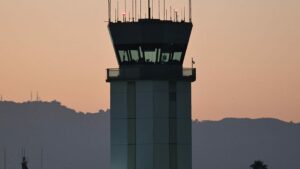Banks will have to set aside capital on thousands of crores of funds they lend to corporates, brokers, asset managers and even clearing houses during the day.
The move would impact several private sector and foreign banks whose capital requirement would go up.
Better known as intra—day credit lines — or ‘day-light overdrafts’ (DLOD) — these loan lines are given sometimes for a couple of hours, with the borrower repaying the money before the close of the business hour.
Today, such exposures are not reported by banks, no risk weight is assigned to the credit, the facilities are not rated, and in a predominant number of cases no interest is charged by banks on these intra-day overdrafts. Thus, DLODs — ‘zeroised by the end of the day’ in banking parlance — are never declared in a bank’s total loan number. This has been the practice for decades.
“This will change now. In the course of their inspection, Reserve Bank of India (RBI) officials have made it clear to banks that capital must be allocated on the DLODs, besides documenting and reporting them,” a senior banker told ET.
The regulator, according to banking circles, probably thinks many corporates are using DLODs to manage their treasuries and park the surplus in mutual funds, resulting in a tightness in liquidity in the money market. Besides, RBI is veering around to the view that capital should be earmarked against such intra-day credits as they may have systemic implications, thanks to growth of markets and surge in trading volumes.
Besides corporates, mutual funds take DLODs to handle redemption outflow to investors and stock brokers use it pending receipt of money from stock buyers, or in furnishing derivatives trade margin in the morning or paying for spot trades by institutions in case of mismatches.
“But, we feel, more than mutual funds, it’s the use of DLODs by corporates which the regulator is not comfortable with. In fact, they are asking banks to ask every corporate to state how the DLOD would be used and cross-check whether there was any deviation from the end use.. This is very difficult to do on a daily basis,” said another banker.
Apart from allocating capital and rating DLODs, banks have to document the deals. This means paying stamp duty. “Most banks are headquartered in Mumbai. But due to the high stamp duty in Maharashtra, they would typically like to do the documentation in a state where the duty is lower. But it has to be justified..Not only the bank should have a branch in the other state, it would be odd if a lower duty, applicable in Delhi, is paid when both the bank and the company is based in Mumbai,” said another person.
Also, banks are being told by regulatory officials not to overstep the credit limits declared in the DLOD deal document with a borrower. “Since DLOD has been a flexible arrangement, banks took the call whether to give more than the agreed amounts based on their comfort with respective clients,” said an industry source.
The person said that the demand for DLOD may exist even with the proposed T+0 (trade plus zero) settlement in equities if the market does not become prefunded. “This for the purchase leg. But the demand for DLOD would be there in case of sell transactions if funds have to be released quickly,” said a market source.
In 2022, banks were directed by RBI to stop DLOD stock brokers without collaterals and back such exposures with a minimum margin of 50% in the form of fixed deposits and marketable securities. (Thus, a broker drawing Rs 300 crore as intra-day fund must give collaterals of at least Rs 150 crore to the bank).
After 2 years, the banking regulator has now taken the next step to account for the risk on DLODs.











